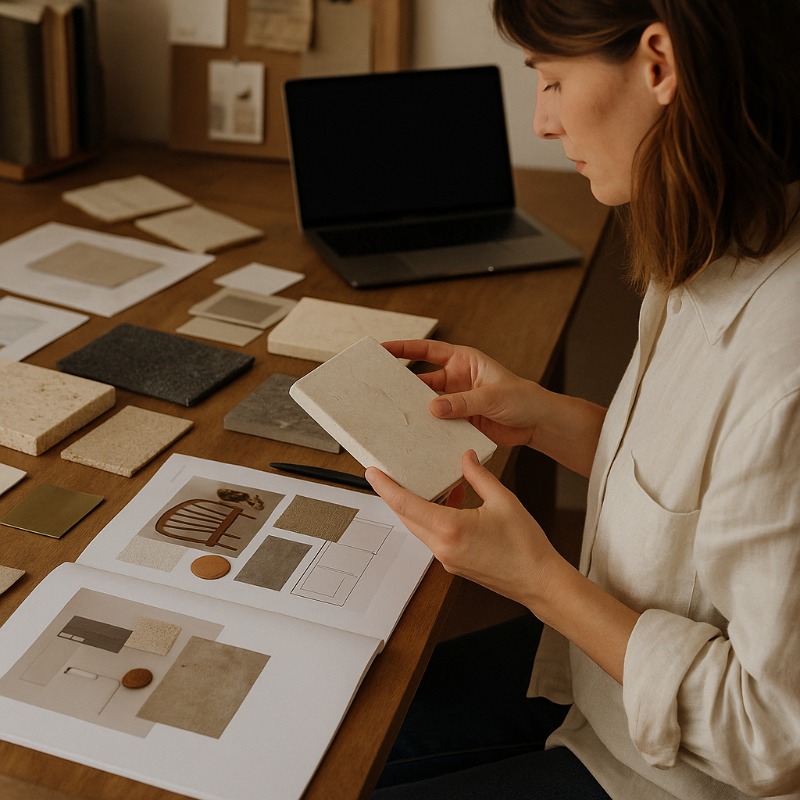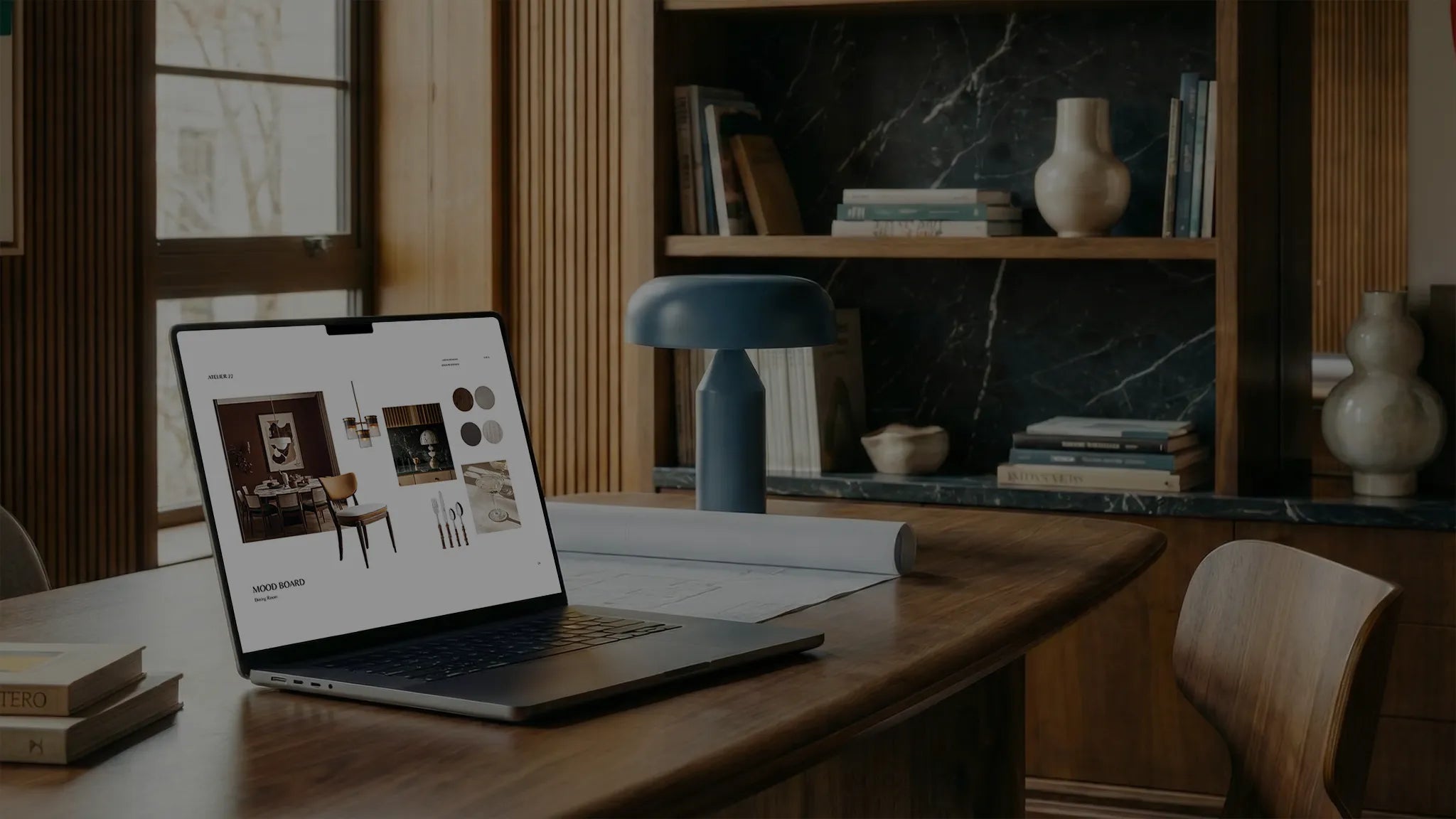Why Client Experience Matters: A Designer's Guide

What happens between the pitch and the reveal is client experience.
It's the follow-up that arrives when promised. The presentation that makes decisions clear rather than overwhelming. The invoice that matches what was discussed. These seemingly small moments shape whether clients see your design service as essential or optional.
Beyond Beautiful Spaces
Interior designers often discuss their work in terms of visual appeal and function: the perfect colour pairing, the ideal spatial flow, the furnishings that transform a room. These tangible elements matter deeply, of course. But they represent only half of what clients ultimately pay for.
The other half is invisible: the journey clients take from initial contact to final handover.
This journey, this experience, shapes how clients value your service long after they've forgotten the specifics of your proposal or the exact shade of paint you selected. It determines whether they consider your fee an investment or an expense. Most critically, it influences whether they'll recommend you to others.
The Moments That Define Your Value
Consider these scenarios:
When a client emails with a question about their project:
- Do they receive a prompt, clear response that addresses their concern?
- Or do they wait days, wondering if their message was received?
When decisions need to be made:
- Are options presented in a way that feels manageable and thoughtful?
- Or are they overwhelmed with choices and left feeling uncertain?
When unexpected challenges arise:
- Is there a process in place to address changes and keep the project moving?
- Or does each hurdle feel like a crisis that threatens the timeline?
These everyday interactions may seem small in isolation. Collectively, they form the foundation of client trust or its undoing.

The Cost of Inconsistency
Many designers invest thousands in their portfolio, website, and initial client presentations. Yet they leave the remaining touchpoints to chance, creating a disconnect between expectation and reality.
This inconsistency carries hidden costs:
Financial costs: When clients question invoices, delay payments, or negotiate fees downward.
Time costs: When projects extend beyond their timeline due to miscommunication or unclear processes.
Reputation costs: When clients choose not to refer you, despite being satisfied with the final design.
Emotional costs: When you find yourself explaining the same concepts repeatedly, justifying decisions, or managing unnecessary tension.
Most concerning is that designers rarely receive direct feedback about these issues. Clients simply don't return or recommend your services.
From Process to Experience
The difference between having a process and creating an experience lies in intention.
A process ensures that necessary steps are completed. It serves your operational needs. An experience, by contrast, considers how each interaction feels from the client's perspective. It addresses their emotional needs alongside their practical ones.
This shift requires examining each client touchpoint through the lens of what the client needs at that moment:
- Discovery phase: Clients need clarity about what's possible and validation that their concerns matter
- Proposal phase: Clients need confidence in your expertise and transparency about what to expect
- Design phase: Clients need guidance through decisions and reassurance about their choices
- Implementation phase: Clients need updates that maintain trust and manage expectations
- Completion phase: Clients need a sense of closure and the tools to maintain their new space
When each of these needs is anticipated and addressed through thoughtful documentation and communication, the result is more than efficiency. It's an experience that positions you as irreplaceable.
Creating Consistency Without Constraint
Some designers resist formalising their client experience, fearing it will feel rigid or impersonal. The opposite is true. A well-designed framework creates the freedom to be genuinely present with clients rather than constantly reacting to preventable issues.
Consider how the right documentation:
- Eliminates repetitive explanations by answering common questions before they arise
- Creates natural boundaries around your time and availability
- Positions your knowledge from the first interaction
- Guides clients through decisions with appropriate context
- Establishes value that justifies your fee
This structure doesn't constrain creativity. It protects it by creating the conditions for trust to flourish.
The Referral Effect
Perhaps the most compelling reason to elevate your client experience is its impact on referrals. Design clients rarely make decisions based solely on portfolio images. They seek recommendations from friends, family, and colleagues who have worked with designers themselves.
What do these conversations focus on? Rarely the specific design elements. Instead, they revolve around the experience:
"She was always responsive." "He made the process so much easier than I expected." "They handled problems immediately." "I never felt pressured to make decisions." "Everything was organised from start to finish."
These testimonials speak to the experience rather than just the outcome. When clients become advocates for your service, they're not just recommending your design sensibility. They're endorsing how you made them feel throughout the process.
From Luxury to Necessity
The ultimate goal of elevated client experience is to transform how clients categorise your service: from luxury to necessity.
When your process feels considered at every stage, clients stop questioning whether they need your guidance. The value becomes self-evident through every interaction, document, and conversation. They understand why your service costs what it does, because they experience its worth directly.
This shift doesn't happen through grand gestures. It emerges from consistent, thoughtful touches throughout the client journey. Each document that arrives as promised. Each question answered before it becomes a concern. Each expectation not just met, but anticipated.
Where to Begin
Transforming your client experience doesn't require reinventing your practice overnight. Begin by examining the moments where clients seem most uncertain or where your team spends excessive time addressing the same questions.
These friction points often reveal opportunities for improvement:
- If clients frequently ask about timeline, your onboarding documents may need more precise expectations
- If scope creep is common, your proposal structure may need refinement
- If decision-making stalls projects, your presentation format may need reconsideration
Each of these challenges represents an opportunity to elevate both efficiency and perception through thoughtful documentation and communication.
The most successful designers understand that beautiful spaces are only part of what clients pay for. The experience of working with you, the assurance you instil, the understanding you provide, the care you demonstrate: these elements determine whether clients see your service as valuable beyond measure.
In an industry where creative talent abounds, client experience becomes the true differentiator between designers who struggle and those who thrive.
Sonderpath Studio creates templates that help interior designers elevate their client experience at every stage of the process. Browse our collection to discover tools that transform how clients perceive and value your service.




